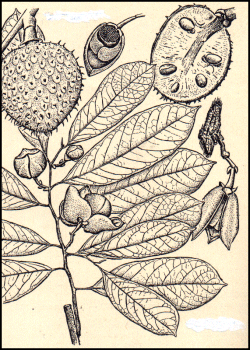Moving Gishta into the Global Economy
HOME | ABOUT ETHIOPIA | ABOUT GISHTA | GISHTA GOING GLOBAL | CONCLUSION | REFERENCES
 Gishta, or the wild apple custard, is a shrub or small tree natively grown in several African countries. The fruit is fleshy, lumpy, and often egg shaped. It starts out green, changing to yellow or orange when it ripens. It is possible for the plant to regenerate through seed germination, root sucking, and coppice. The most common of these is seed germination [12].
Gishta, or the wild apple custard, is a shrub or small tree natively grown in several African countries. The fruit is fleshy, lumpy, and often egg shaped. It starts out green, changing to yellow or orange when it ripens. It is possible for the plant to regenerate through seed germination, root sucking, and coppice. The most common of these is seed germination [12].
The gishta plant has been known to have many different uses. The most obvious of these is food. The fruit is sweet and has been compared to pineapples, the leaves are considered vegetables by some, and the flowers are used as spices. It has also been used as fodder for animals. The fiber from the young shoots has proven to be efficient in binding, and the wood is commonly used in the making of poles and tool handles. A popular dye has been obtained from the bark as well as an effective insecticide, and essential oils have been extracted from the leaves. The gishta plant is also used to treat a myriad of diseases. The bark is used to remedy ailments ranging from guinea worms to diarrhea to snake bites to toothaches. The gum from the bark is used to seal wounds. The leaves are used to treat pneumonia and as an everyday tonic. The roots are also used for illnesses such as stomachaches, venereal diseases, and dizziness. Combinations of parts can be used to treat dermatological diseases. The ash from the wood is used in chewing tobacco as well as in the making of soaps. Aside from being eaten as vegetables, the leaves are sometimes used to stuff pillows and mattresses [12]. The roots are also excellent for use as substitutes for cork [4]. With all of these uses for gishta, we feel that they are sure to find a spot in several markets for different uses.